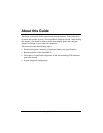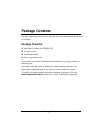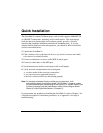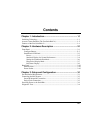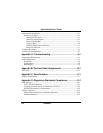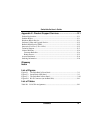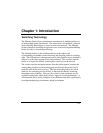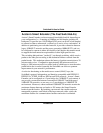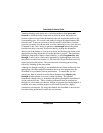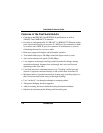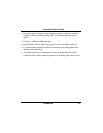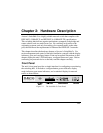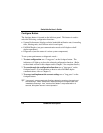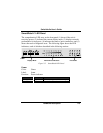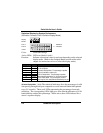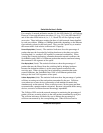
SwitcHub-2s User’s Guide
Introduction 1-3
Traditional bridges and routers use a switching method called store-and-
forward in which the entire frame must be received before the bridge can
perform a table look-up for the destination node and forward the packet to the
corresponding port. As a result, each packet is delayed by approximately 800
microseconds. It may be necessary to use store-and-forward when a lot data
errors are occurring over the network, or when connecting to very slow devices.
Compared to this “safe” mode of operation, cut-through reduces the packet
transmission delay to around 20 microseconds by picking the destination
address out of the header as soon as its received, and directing the frame to the
appropriate port long before the full packet has been received. The remaining
technique, employed to improve data reliability, is called fragment-free cut-
through. It uses a more conservative approach to cut-through that waits until
the collision window has elapsed (i.e., the first full 64 bytes has been received)
before processing the packet. This prevents runts from being passed along,
effectively cleaning up the data stream.
Although cut-though switching is recommended as the fastest method for most
applications, the other methods mentioned above are also supported by the
SwitcHub-2s to guarantee flawless performance. To ensure that you can
manage any kind of network load, the Smart Extender uses adaptive cut-
through switching based on Accton’s smart algorithm. This method
dynamically changes the way it handles data passing through the switch based
on the current error rate. These switching alternatives start at standard cut-
through for a clean data environment, change to fragment-free cut-through for a
moderate error rate, and then progress to store-and-forward for a highly
contentious environment. By using this method, the SwitcHub-2s delivers the
best networking performance under any environment.



